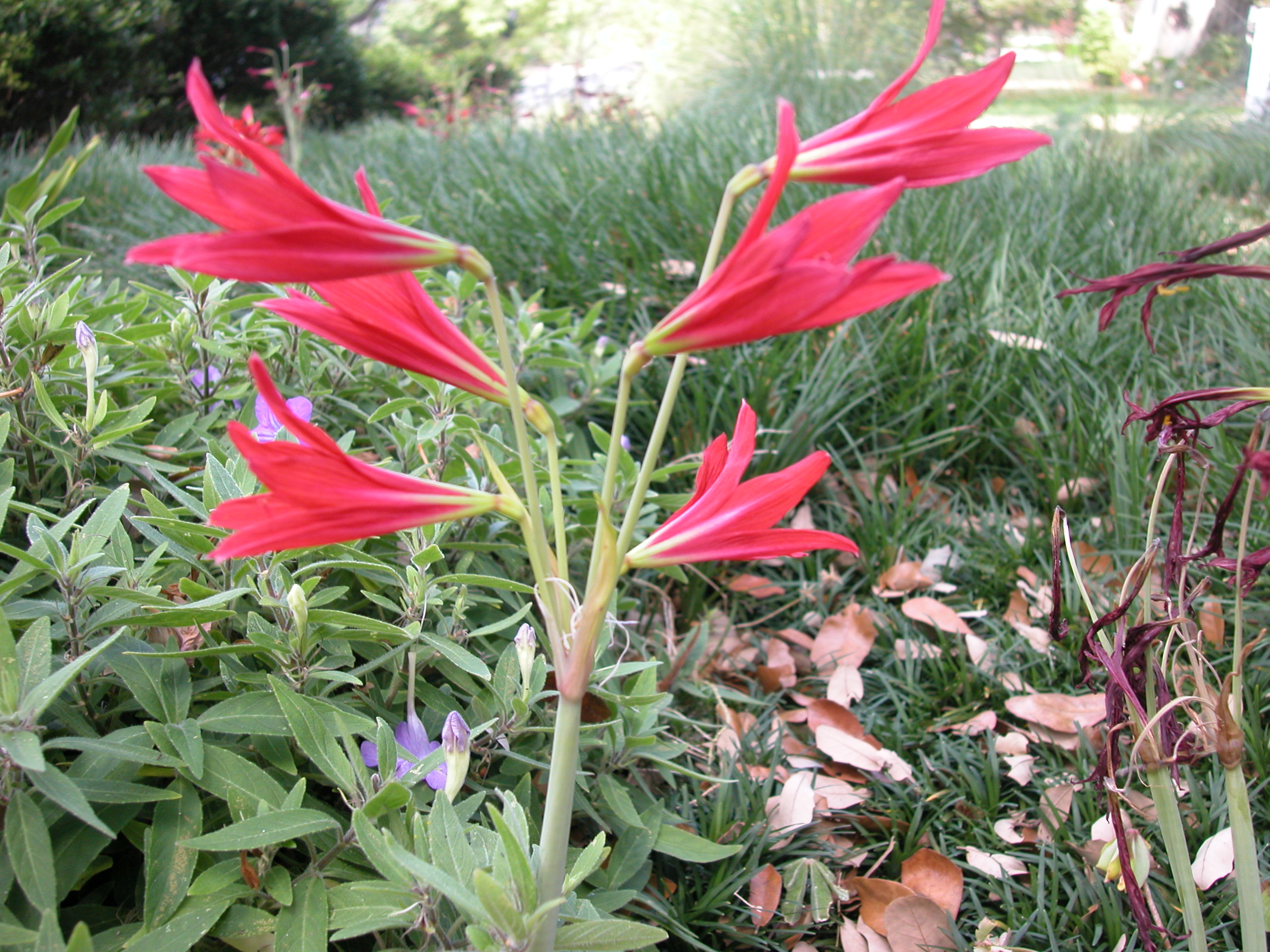Human Flower Project
Sunday, September 19, 2004
Marigolds—Eye Candy or Eye Medicine?
A Canadian firm has patented an extract of marigold flowers for its benefit to eye health.
Ever tried photographing marigolds? A camera tends to turn their iridescent oranges and yellows positively day-glo. But it appears these humble flowers are capable of more than dazzle.
Fitness and Wellness Week reports that Kemin Foods has been granted a patent from Canada’s Intellectual Property Office to make “purified, crystallized Lutein” from marigold petals. The article notes that several studies have shown lutein, a natural antioxidant found also in spinach and eggs, reduces the risk of age-related macular degeneration and cataracts.
“Lutein, present in many areas of the eye including the macula and lens, appears to filter high-energy blue wavelengths of visible light – from both natural sunlight and indoor light.”—which may explain both why my marigold photos take on a black-light-poster radiance and why the new eye-care product goes by the name FloraGLO.
Tuesday, September 14, 2004
In Lieu of Flowers—Democracy
The florists’ bete noir—“in lieu of flowers”—takes a political twist in Michigan.
Flowers, especially in predominantly Protestant cultures like the U.S., have always been tinged with negativity. For their association with earlier pantheistic religions, they were considered supect—the emblems of licentious nature gods. Thought of as luxury items, flowers implied decadence—Puritan church appointments were spare and plain; put the Bible on the altar, but God forbid an urn of striped peonies!
In our time, this prudish attitude toward flowers takes many forms, most bluntly the prescription added to funeral notices: “in lieu of flowers donations may be made to Such and Such Charity.” The Society of American Florists has been battling this trend since the turn of the twentieth century. Its campaigns to encourage funeral flowers won national PR awards in the 1950s and again in the late ‘80s for putting money and muscle into the effort. Even so, the trend toward “in lieu of” requests keeps increasing.
To turn from the floral expression of mourning to fund-raising in the name of the deceased signals a major discord in our society’s attitudes toward death and remembrance. A heart shaped wreath of roses, as perishable as the beloved, is a tribute that publically mimicks personal loss. A donation to the Heart Association or the American Cancer Society is something altogether different—a memorial to progress that would seem to say, “We’re working on this death thing. A few more scientific breakthroughs, and we can dispense with it altogether!”
Flowers bespeak our vulnerability and transience, memorial donations our largesse and power.
As for today’s twist. Pete Petoskey of Peshawbestown, Michigan, died September 2 at age 89. A retired Army mapmaker, lifelong Democrat, and sports buff, Petoskey had donated money to many Indian tribes through the years. In his father’s waning days, Petoskey’s son asked if, at his death, he’d like donations to go to Guatemalan Indians, in lieu of flowers.
Susan Ager of the Detroit Free Press interviewed Petoskey’s son.
“I remember saying, ‘Dad, do you want people to send money to the Guatemalan Indians in your memory?’ He said: ‘That’s expensive. Many of the Indians that we know are families who don’t have that kind of money.’ He said, ‘Better for them to do something more tangible, like vote for John Kerry.’ “
Culture & Society • Florists • Politics • Religious Rituals • Permalink
Monday, September 13, 2004
Flowers as Weather-Casters
Arctic wildflowers, like Appalachia’s service tree and the “chilly lily,” predict climate changes, only this time the change may be global.
The chilly lilies are up in Central Texas. Morton King of Georgetown, TX, gave this nickname to the old-fashioned Oxblood Lily (rhodophiala bifida) after noticing that their blooms coincided with the first cold spell at summer’s end.

“They’ve become famous,” says King, 91, “because they come up a week or two before the first cold front in the fall. They are alleged to be an accurate predictor of when things are going to cool off and youre going to have a fall rain.”
Each year when they bloom, King writes to the Georgetown Sun, telling the community that autumn is, blessedly, on the way. A Ph.D. sociologist, King is careful about causality: “Now, it’s the coming cold weather that makes them come up, I suspect, rather than vice versa,” he laughs.
Salon.com reported last week about another flower harbinger that has Alaskan botanists anything but happy. According to Rebecca Clarren’s 9/11/04 report “Baked Alaska,” strangely mild September temperatures have set off a second bloom cycle this year in the eriophorum plant. Not good. You don’t have to be a University of Alaska botanist to figure out that flower seeds don ‘t winter over too well in the Arctic. Clarren explains, “Flowers only make one set of buds each year, so if they spend next year’s buds now, they’ll be out of luck next spring. If the warming trend continues, the flowers may go extinct.”
Researchers near Toolik Lake believe that the eriophorum plant’s confusion is yet another sign of global warming, which already has melted several Alaskan shoreline communities off the map.
Are there flower weather-predictors in your area? In Eastern Kentucky, the service plant (pronounced “sarvice” there) was once the harbinger of spring. I’ve heard that once it bloomed, people knew the ground had thawed enough for burials.
The twice-blooming eriophorum may portend a very different kind of funeral.




